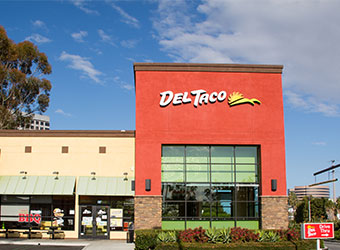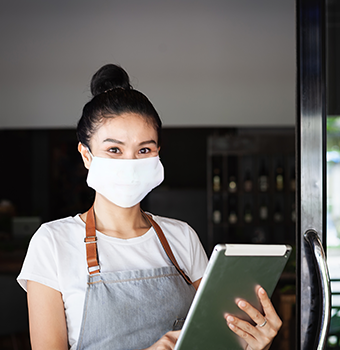After more than a year, the restaurant industry has learned important lessons about how to navigate COVID-19 in 2021 and beyond. Here are seven common lessons that many organizations have learned during recovery.
1. Concepts with existing delivery and drive-through models thrived.
These restaurant brands did not have to re-tool operations to continue serving guests when the pandemic closed indoor dining. Instead, they double-downed on their model by staffing up the drive-through with outside attendants to take and deliver orders. Brands also added double kitchens to maximize output to meet guest demand.
2. Partner with more suppliers, especially regional ones.
The pandemic served as a reminder for restaurants to streamline their procurement processes, consider partnering with more than one supplier, especially a regional one, and nurture vendor relationships to minimize disruptions. It’s also prudent to eliminate difficult-to-source ingredients and broaden the menu to distribute risk.
3. Ghost kitchens are trending.
The pandemic created a high demand for food delivery and pickup service, which has led to the growth of concepts without dining rooms. By minimizing overhead, brands can stay in the black, and staff and guests can stay safe with minimal people in the space.
4. Expand outdoor seating.
In addition to spacing tables to achieve the recommended 6 feet of social distancing, restaurants are also expanding outdoor seating to make up for lost seating in the dining room. They are investing in canopies and heat lamps to extend the outdoor dining season.
5. Promote consumer trust.
Restaurants must ensure guests and staff feel comfortable and safe in their space. Post the company’s detailed covid response on the website. Explain how the brand is keeping its staff and guests safe and healthy. Post scannable signs in the restaurant that quickly detail safety measures. Designate staff whose sole responsibility is sanitizing surfaces throughout the restaurant. Details matter, so provide access to hand sanitizers, keep used and sanitized pens in separate containers, and if staff handles credit cards, wipe them down afterward with sanitizing wipes in guest view.
6. App development for ordering and payment
If restaurant brands didn’t have an app before the pandemic, they do now. The development of apps exploded during the pandemic to give guests a convenient way to order, pay and track deliveries. Even small restaurant concepts benefit from apps as neighbors feel compelled to support local businesses during this time.
7. In-house experts in local governance
Restaurant brands now have in-house experts in local regulations to keep leadership apprised of constantly changing guidelines.



